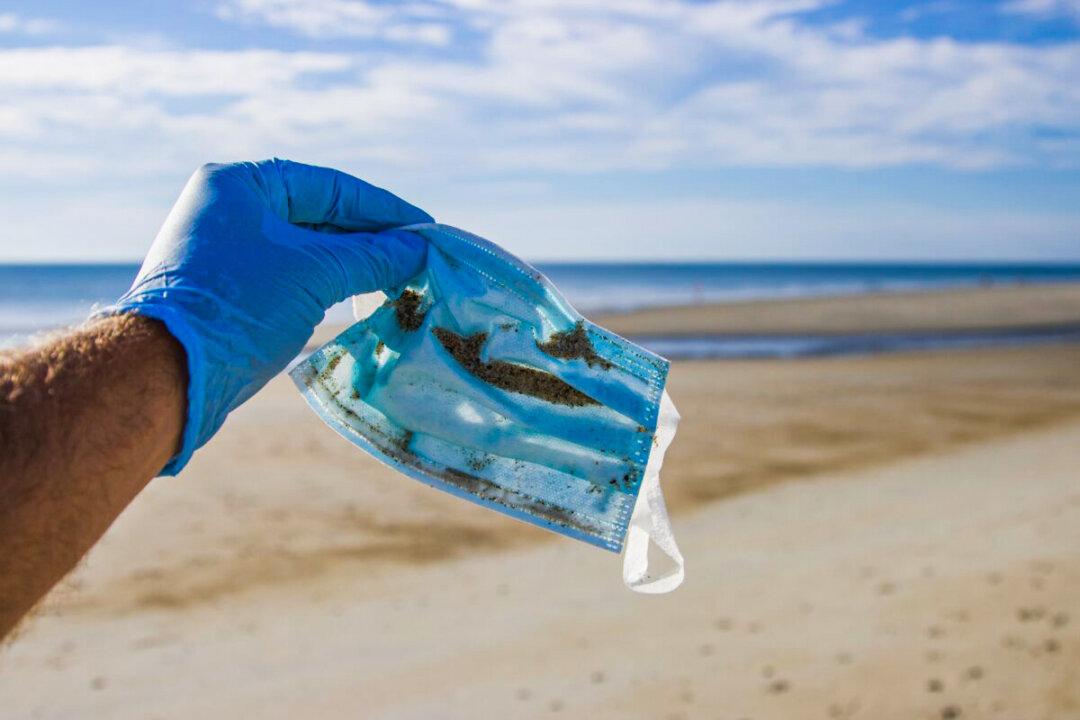Plastic pollution was already ubiquitous before the CCP virus pandemic arrived, but the past two years have seen a steep rise in the mountain of plastic waste, as the use of disposable masks, gloves, and food packaging soars.
New research estimates that in every minute, three million face masks are put into the environment, or 129 billion a month.





